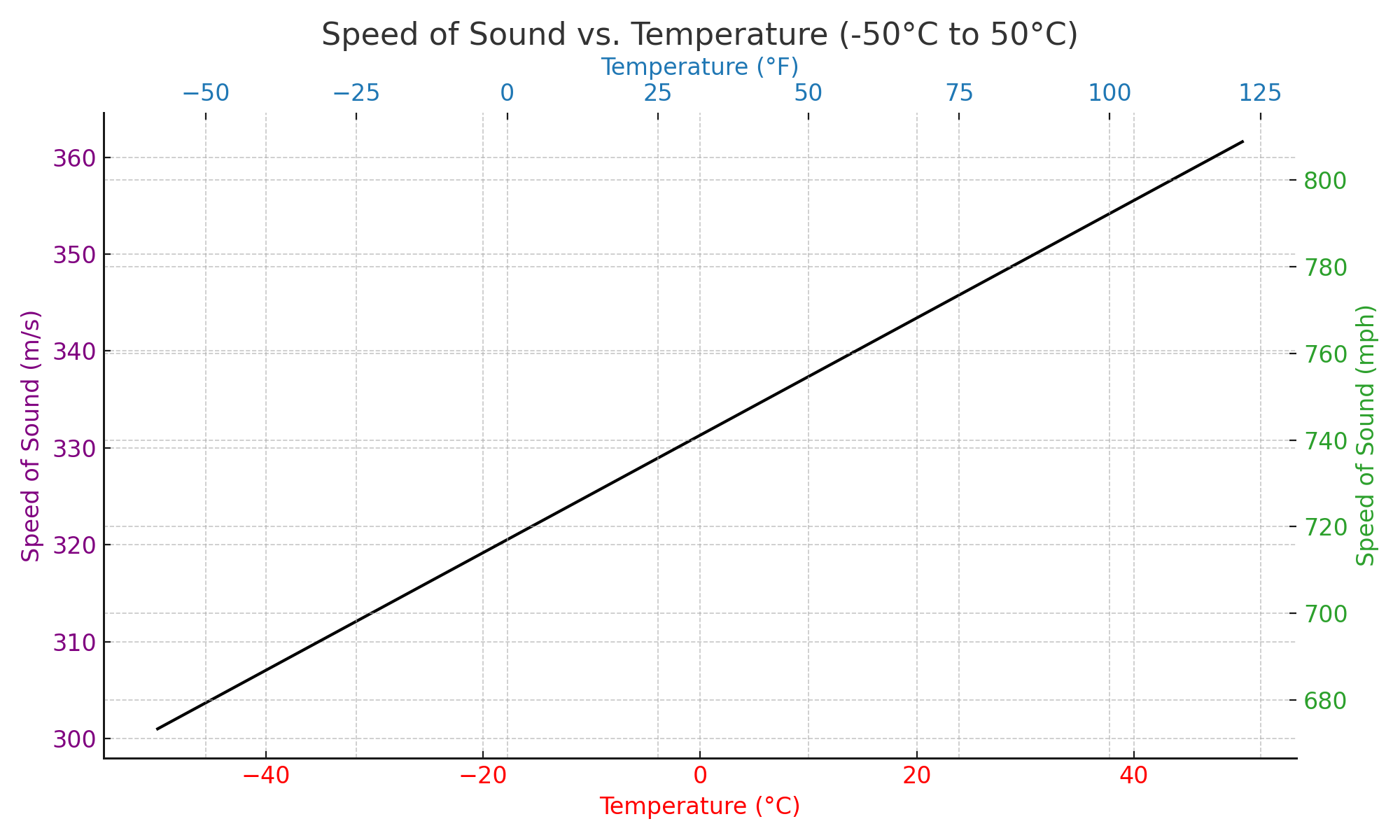Chapter One: An Acoustics Primer

3. The Speed of Sound: how fast does sound travel?
The speed at which sound propagates (or travels from its source) is referred to as the Speed of Sound (or SOS). The speed of sound is directly influenced by both the medium through which it travels and the factors affecting the medium, primarily temperature and humidity for gases like air, and additional material properties for media such as liquids and solids. Bad news for Star Wars fans—there is no sound in the vacuum of space because there are too few molecules to propagate a wave.
Variations in the speed of sound in air are caused by certain conditions of the air itself (e.g. humidity, temperature (altitude is disputed in the literature)). Speed is not affected by the sound’s amplitude, frequency or wavelength. To calculate the approximate speed of sound in dry air, use the following formula:
V = velocity (meters per second) of the speed of sound, Tc = temperature in Celsius
Using this formula, the approximate speed of sound at 20° Celsius (68° Fahrenheit) is:
- 344 meters per second (m/s)
- 1128 feet per second (f/s)
- 770 miles per hour (mph)
- 1235 kilometers hour (kph)
Use the calculator below to compute the approximate speed of sound at other temperatures.


Speed of Sound Calculator
Enter a temperature in the scale of your choice:
The linear equation above works well to approximate the SOS inside a limited temperature range and some of you may have noticed that the given standard speed values for 20º C above are not exactly what you would get using that equation. A more accurate formula is:

This formula indicates that the speed of sound (in air) is proportional to the square root of temperature.

Amazing Factoid #2!
Col. Chuck Yeager is credited with being the first person to "break the sound barrier" by exceeding the speed of sound in controlled flight while piloting the Bell X-1 rocket plane (pictured here) on October 14, 1947. The 700 mile per hour supersonic flight achieved Mach* 1.06, or 106% the local speed of sound for the humidity and temperature it traveled through. The speed of sound in those conditions was ~660 mph, well below the 770 mph speed of sound at dry, 68° F conditions.
*Mach numbers (with Mach 1 being the local speed of sound) are named in honor of physicist Ernst Mach. Being a dimensionless quantity, the word "Mach" traditionally precedes the actual measured value, similar to "mark twain" for depth soundings (though if you are from Boston or Down East, these two measurement scales might be pronounced quite similarly).